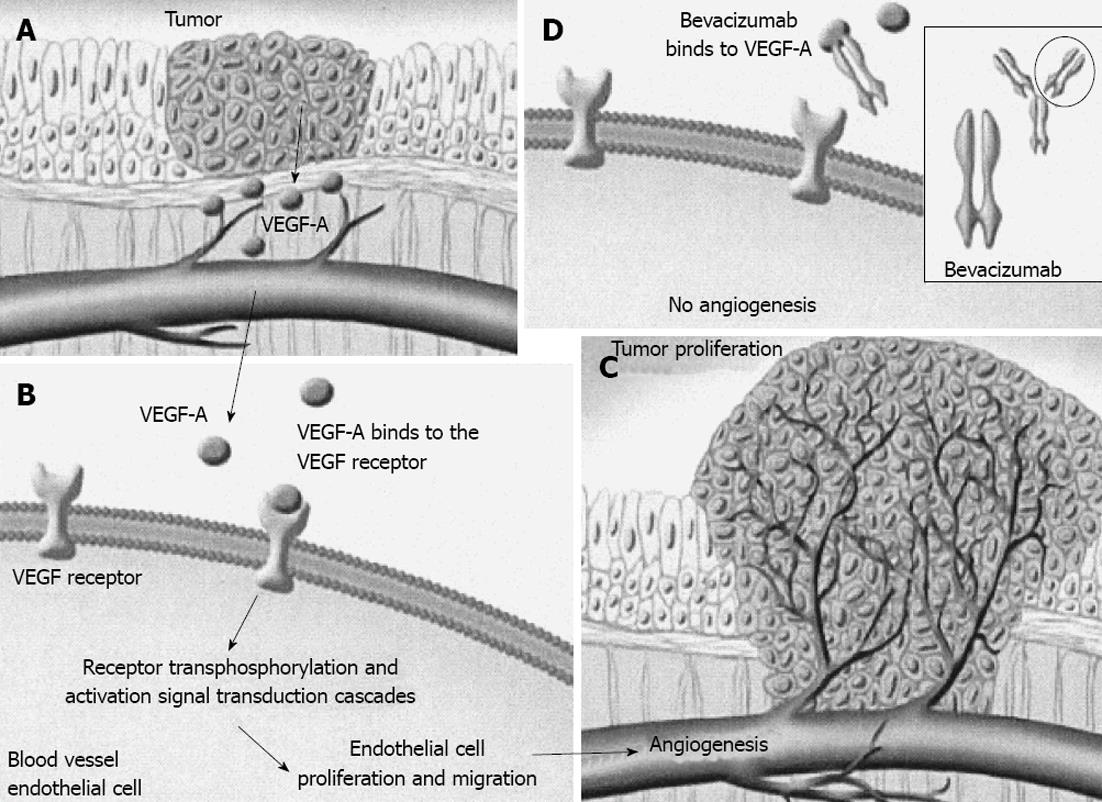Copyright
©2013 Baishideng Publishing Group Co.
World J Gastroenterol. Aug 21, 2013; 19(31): 5051-5060
Published online Aug 21, 2013. doi: 10.3748/wjg.v19.i31.5051
Published online Aug 21, 2013. doi: 10.3748/wjg.v19.i31.5051
Figure 1 The process of angiogenesis and the mechanism of action of bevacizumab.
A: The malignant cells secrete vascular endothelial growth factor (VEGF)-A; B: It is incorporated with its tyrosine kinase receptors (VEGFRs), promoting endothelial cell proliferation and migration; C: It leads to increased angiogenesis inducing tumor growth; D: Bevacizumab is combined with VEGF-A forming a new large molecule that lacks the ability to bind with its receptors; thus avoiding its incorporation and action, it then inhibits angiogenesis. Taken from Shord et al[15].
- Citation: Pavlidis ET, Pavlidis TE. Role of bevacizumab in colorectal cancer growth and its adverse effects: A review. World J Gastroenterol 2013; 19(31): 5051-5060
- URL: https://www.wjgnet.com/1007-9327/full/v19/i31/5051.htm
- DOI: https://dx.doi.org/10.3748/wjg.v19.i31.5051









